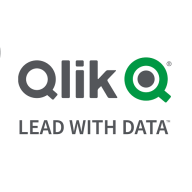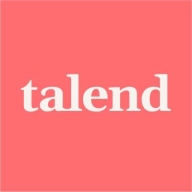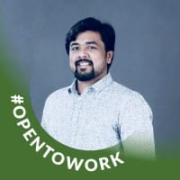

Qlik Replicate and Talend Open Studio are two prominent data integration tools, each providing distinct functionalities for efficient data management. Based on the available comparisons, Qlik Replicate seems to have the upper hand in real-time data processing due to its minimal latency capabilities, whereas Talend Open Studio stands out with its extensive range of connectors and customization options, particularly aiding in data integration and preparation tasks.
Features: Qlik Replicate is favored for its real-time data transformation, quick loading capabilities, and stability. It uses log-based data capture, ensuring high-speed replication with minimal impact on source databases. Talend Open Studio offers a vast connector library and a user-friendly drag-and-drop interface that simplifies data integration. It provides visibility into backend code which aids developers in error resolution and allows robust customization.
Room for Improvement: Qlik Replicate could benefit from enhanced pricing transparency, improved error message clarity, and expanded API capabilities. Its interface might be challenging during integration issues with multiple destinations. Talend Open Studio should optimize resource usage, simplify error tracking, and increase online training resources. Expanding CDC features and improving the installation process to address Java-related constraints could enhance its offering.
Ease of Deployment and Customer Service: Qlik Replicate supports various deployment environments, including public and hybrid clouds, but faces criticism for the responsiveness and clarity of its technical support. Talend Open Studio thrives in on-premises settings, offering flexibility but lacking adequate customer service documentation. While both have advantages in deployment, Qlik requires stronger support mechanisms to enhance user experience.
Pricing and ROI: Qlik Replicate is seen as costly for smaller enterprises with pricing based on endpoints, yet users find the investment worthwhile due to significant database and storage savings. Talend Open Studio provides a free community edition and incurs costs primarily for its enterprise version. It is praised for streamlining tasks and delivering ROI through labor savings. Some consider it expensive, but its open-source availability offers cost-effective alternatives.
I conducted a cost comparison with the AWS service provider, and this option is much cheaper than the Kinesis service offered by AWS.
Customers have seen ROI with Qlik Replicate because they get their data for analysis faster, enabling quicker decision-making compared to traditional data sourcing methods.
Even priority tickets, which should be resolved in minutes, can take days.
Support response times could be improved as there are sometimes delays in receiving replies to support cases.
The system could be scaled to include more sources and functions.
It is a core-based licensing, which, especially in the banking industry, results in the system capacity being utilized up to a maximum of 60%.
Qlik Replicate could be improved in the next release by incorporating more monitoring options to monitor the logs.
If we could have round-the-clock support, we would be able to resolve many issues which we encounter during the development part.
For Qlik Replicate, the setup cost includes the requirement of a server, which represents the hardware cost that must be covered.
Licensing is calculated based on the machine's total capacity rather than actual usage.
The most valuable feature of Qlik Replicate is their change data capture feature.
Data retrieved from the system can be pushed to multiple places, supporting various divisions such as marketing, loans, and others.
It also comes with a console which helps us to monitor the jobs we have built in, making that monitoring part easy.
| Product | Market Share (%) |
|---|---|
| Talend Open Studio | 3.2% |
| Qlik Replicate | 2.3% |
| Other | 94.5% |


| Company Size | Count |
|---|---|
| Small Business | 9 |
| Large Enterprise | 10 |
| Company Size | Count |
|---|---|
| Small Business | 22 |
| Midsize Enterprise | 13 |
| Large Enterprise | 18 |
Qlik Replicate is a data replication solution for replicating data from one source database to another for business intelligence software. It offers data manipulation and transformations, replication without impacting source databases, and ease of use without needing ETL. The solution is stable and user-friendly, with detailed logging and support.
Qlik Replicate has improved the organization by allowing each team to replicate their data into a single-source data location. The most important feature of Qlik Replicate is its ability to replicate and update records without needing a programmer.
Talend Open Studio is a free, open source ETL tool for data integration and Big Data. The solution enables you to extract diverse datasets and normalize and transform them into a consistent format which can be loaded into a number of third-party databases and applications.
Talend Open Studio Features
Talend Open Studio has many valuable key features. Some of the most useful ones include:
Talend Open Studio Benefits
There are several benefits to implementing Talend Open Studio. Some of the biggest advantages the solution offers include:
Reviews from Real Users
Below are some reviews and helpful feedback written by PeerSpot users currently using the Talend Open Studio solution.
Elio B., Data Integration Specialist/CTO at Asset messages, says, "The solution has a good balance between automated items and the ability for a developer to integrate and extend what he needs. Other competing tools do not offer the same grade of flexibility when you need to go beyond what is provided by the tool. Talend, on the other hand, allows you to expand very easily."
A Practice Head, Analytics at a tech services company mentions, “The data integration aspect of the solution is excellent. The product's data preparation features are very good. There's very useful data stewardship within the product. From a technical standpoint, the solution itself is pretty good. There are very good pre-built connectors in Talend, which is good for many clients or businesses, as, in most cases, companies are dealing with multiple data sources from multiple technologies. That is where a tool like Talend is extremely helpful.”
Prerna T., Senior System Executive at a tech services company, comments, “The best thing I have found with Talend Open Studio is their major support for the lookups. With Salesforce, when we want to relate our child objects to their parent object, we need to create them via IDs. Then the upsert operation, which will allow you to relate a child object to the event, will have an external ID. That is the best thing which keeps it very sorted. I like that.”
An Implementation Specialist, Individual Contributor at a computer software company, states, “I can connect with different databases such as Oracle Database or SQL Server. It allows you to extract the data from one database to another. I can structure the data by filtering and mapping the fields.” He also adds, “It is very user-friendly. You need to know the basics of SQL development or SQL queries, and you can use this tool.”
PeerSpot user Badrakh V., Information System Architect at Astvision, explains, "The most valuable features are the ETL tools."
We monitor all Data Integration reviews to prevent fraudulent reviews and keep review quality high. We do not post reviews by company employees or direct competitors. We validate each review for authenticity via cross-reference with LinkedIn, and personal follow-up with the reviewer when necessary.